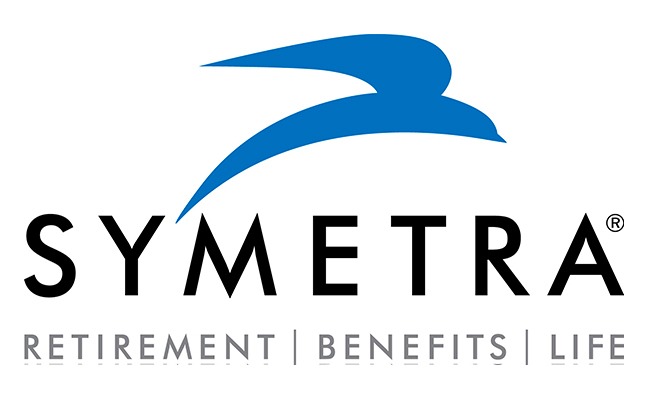Reimagining Retirement in a Post-COVID World
Delivering Products of the Future
For the Next Generation of Retirees
Context
The definition of retirement products may entirely change as we emerge from the pandemic. Structural changes in our economy may result in very slow growth. Interest rates may remain at record low levels over the next five years. As a result, traditional retirement savings products may not deliver the growth and income potential needed by consumers in later years. However, rapid advances in technology offer a new range of potential services that could change the math for a happy and secure life in retirement.
Our virtual discussion forum
In a virtual forum on December 15, 2020, we discussed how we could rewrite the code for managing a successful retirement. We discussed a range of potential outcomes. This included radically redesigning annuities as we know them. It extended as far as thinking about life in retirement as a giant app connecting the retiree to a range of services where insurance is really just the battery keeping the system working. We will synthesize our discussion and provide a roadmap for future product developers to potentially follow in the coming years.
Current industry landscape
Prior to COVID-19, the traditional retirement industry invested significant resources attempting to encourage more people to save for retirement. In a recent study, entitled Report on the Economic Well-Being of U.S. Households in 2018, the Federal Reserve found that that 17% of those aged 45- 59 reported having no retirement savings.1 Of that same group, only 42% felt they were on track to save for retirement. Studies have continuously demonstrated that general savings rates among the U.S. population continues to remain at very low levels. The shift from defined benefit plans, like pensions, to defined contribution programs, like 401(k)s, has not shifted the tide at the workplace. Persistent low interest rates and higher market volatility has caused insurance carriers to either reduce the benefits of annuities or stop writing them altogether. COVID-19 has only added stress to an already ill-prepared set of retirement plans across the U.S. without concrete product solutions.
Possible future directions of product development
Start fresh from the ground up
Many people inside the retirement savings industry feel we need to radically change the way we design, market, sell and service our products. Even over the last 20 years, we have seen multiple attempts to sell annuities online, to offer low or no fee products, to offer low-minimum recurring premium retirement products, as well other innovative designs. These efforts have all yielded varying degrees of learning and success. As Abby Levy, Managing Partner and Founder of Primetime Partners, observed, we’ve “been waiting for the white horse to come along and the save the day.” We often point to regulation as the biggest hurdle for a new startup.
However, Aaron Shapiro, Founder and CEO of Dayforward, found those doors wide open for his startup. "I anticipated that the regulators were going to be pretty risk averse, and very resistant to a lot of stuff we're going to do. Probably the biggest surprise was how supportive that they were," he said. Could this be time for companies like Dayforward to create de novo carriers capable of rebuilding the entire customer journey from scratch?
Reinvent the carrier from the inside out
Given the time, money, and commitment required to start from scratch, a more pragmatic approach for the industry may feel, to carriers, like reinventing from the inside out. For this strategy, Blair Baldwin, Founder of AgeUp, said, "You have to be lucky enough to be in a carrier that can embrace change," and then set up the operation with enough independence to rapidly test, learn, and iterate. Can carriers provide a consistent level of support over a long enough time, to innovation areas, in order to have a realistic chance of success?
Meet seniors where they actually are today
We also explored rethinking where and how we meet seniors to help with retirement planning. Prior to COVID-19, those "meeting places" had already changed. Tyler End, CEO of Retirable
Rhian Horgan, Founder & CEO of the app Silvur, believes advice is sought in multiple forums, "I think there are going to be moments in time they're going to talk to people. But a 'person' doesn't necessarily mean a financial advisor or an insurance agent. It might be their next-door neighbor. So, I think there’s this shared set of experiences that people are going to talk to their community about,” she said. Beginning in March, all panelists observed remarkable changes in online behavior. How will these communities continue to meet, coalesce and make recommendations going forward?
Redesign the ux of retirement
The future retirement product could be an app that connects all services required for a happy life beyond work. Scott Moody, Co- founder and CEO of K4Connect, offers an app for digital life in assisted living centers across the country, as well as to individuals. COVID-19 opened new doors to this possibility. "Everybody's familiar with the idea of crossing the chasm, the technology adoption curve. Senior living, that chasm, was actually relatively wide, so people were asking, 'Do I need technology now? Can I wait until next quarter?’ Well, that chasm slammed shut, that's over. There's no such thing as a visionary and a pragmatist. Everybody's a pragmatist. They need technology and now they recognize it." Will traditional retirement products just be buttons on the interface of the future app or the battery that powers the entire device?
Capitalize on the new attitude towards risk and life
The pandemic has clearly brought greater awareness to the general public of financial, mortality, and health risks. The industry can capitalize on a reset of expectations and values to reengage the public with our core products. "The balance of our customers that are buying our direct-to-consumer annuity product has tilted more towards folks that are actually requesting our return of premium. They are almost treating it more like a savings vehicle...I think that speaks to this strange time that we live in. Folks are both equally concerned about longevity but also very much so about their short- term mortality risk," said Blair Baldwin, founder of Age-Up. What is the best path forward to speak to consumers about the needs we meet without playing on fear?
Embed retirement savings as a service in other products
Arguably, we have used insurance to support many different business models. In the workplace, group insurance has served an important employee retention tool. New online communities present an intriguing opportunity in which to link retirement products. We already see this happening in the property & casualty arena. "What have the Tesla's of the retirement world done to disintermediate distribution, get people to trust them, and feel confident, so they can transact in that way?" said Jan Buchsbaum, head of new product development for Nassau Financial Group. Just as Tesla has launched its own insurance company for customers, could a similar company do the same for their existing customers in the retirement space?
Invest in building long- term, not transactional relationships
To date, many of the most successful online insurance business models in the individual insurance space resemble lead generation services. This makes sense when discrete, identifiable life events, like having a baby or buying a house, creates a need for insurance. Retirement planning, however, requires a longer-term relationship to create true value. Tyler End recognized this. "We've shown that if we can start a relationship with someone and give them some value early, they're more than willing to continue on with their planning journey," he said. How do we create smaller points of value for customers that set the stage for a later, larger financial commitment?
Don't give up on creating financial literacy
In previous forums, some participants have debated the importance of education in generating action on the part of consumers. A number of participants have argued both sides of the case. Consumers would rather look at their Facebook or Instagram feeds than learn about how a single
Abby Levy agreed, with a caveat. "I raised more concerns than answers around financial literacy. Education is still something that has yet to be cracked...(We need) to change how we speak with people and make it more interesting and sexy." Tom Buckingham, Head of Product & Operations at Nassau Financial Group also agreed and suggested we even start in schools. "I am a big advocate for financial literacy education in high school and college. I'm a math major and actuary, but think the basics are far more important than pre-calculus or geometry," he said. What is that exact formula in a world of small screens and mammoth amounts of legal disclosure?
Ask not when, but how retirement products will be sold on the web
Many discussions around the online sales of retirement products have historically focused on the viability of a new business model. Perhaps the question around digital sales should not focus on if, but how. Aaron Shapiro emphasized that point during the forum discussion. "I've been doing things on the internet for the last 20 years. If there's one thing I've learned it's that anything that could possibly be sold online, has been sold online... Will people ever buy diamonds online? No, that's impossible. Will people be able to buy groceries? No matter what it is, the answer is always yes. So, when I apply it to this space, I think that same thing holds. I don’t think financial products are going to be the one exception to the universal rule that everything else is sold online.” What business models will prove the world wrong about retirement planning?
Reinvent how the whole ecosystem gets paid
A zero-sum approach to the market at large will likely fail. Given the complexity of the market, any business model that succeeds will likely need to find a way for many of the existing players to remain financially viable. "I think what I'm really looking for at this early stage is a business model that makes sense for all the stakeholders, and that’s very challenging in this space," Abby Levy. One solution will be to initiate early, low-cost engagement with consumers on the web and allow them to transition the relationship to advisors. "So, there's a way to balance both, I think, if you're a smart company... How many financial advisors really want to sell a $40,000 fixed annuity? Not a lot, right? So, have that product sold direct-to -consumer and then potentially hand that over to a financial advisor to see if they have any more investable assets," Craig Simms, Principal at Forest Lake Consulting said.
Rethink the role of the (star) advisor
Unfortunately, the biggest competitive advantage of many advisors has been their zip code. They have relied on the lead generation strength of a company or third-party firm to send candidates to them based solely on their location. The rapid acceptance of Zoom has made it possible for every agent to have a national presence if they want it. For strong advisors with decisive target markets, this opens the door to significant growth. Abby Levy worked at a major successful exercise company that grew quickly in highly affluent areas. "I think one of the things you can take from (the success of that company was) is the authority that the instructor has. Who’s the authoritative voice or person that we've seen? Historically, that has been a financial advisor. Someone who sat around the kitchen table who knew your kids’ names, and was that authority. What is the new model of an authority?” she asked. Can we find or create new voices that reach new market at scale?
Appreciation
We want to thank our distinguished panel for framing the discussion:
We also want to the thank all the retirement industry leaders who joined us for this event and shared their unique insight on problems to solve and their investment opportunities. Also, this event could not have occurred without the leadership of Laura Dinan Haber, Program Manager of Nassau Re/Imagine, Ramsey Smith, Founder and CEO of ALEX.fyi, and the marketing team of Nassau Financial Group. Support and funding comes from Nassau Financial Group, Launc[H] and Symetra.
About the Author
Paul Tyler serves as the Chief Marketing Officer for Nassau Financial Group. He leads the branding, marketing, and digital engagement for the company. He founded the incubator Nassau Re/Imagine in 2020 as a place to help companies create the future of insurance today.
About Re/Imagine
Nassau Re/Imagine serves as incubator for companies intending to build a presence in Hartford. We actively support individuals and team committed to building a vibrant insurtech ecosystem in the heart of our insurance community.
Forum Series Sponsors
Opinions expressed in this document reflect only those of participants and do not necessarily express the views or opinions of their employers or our sponsors.
Symetra® is a registered service mark of Symetra Life Insurance Company.
1 Report on the Economic Well-Being of U.S. Households in 2018, https:// www.federalreserve.gov/publications/files/2018-report-economic-well-being-us-households-201905.pdf
 NASSAU REIMAGINE
NASSAU REIMAGINE

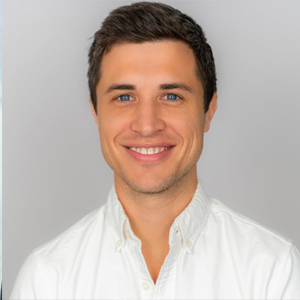
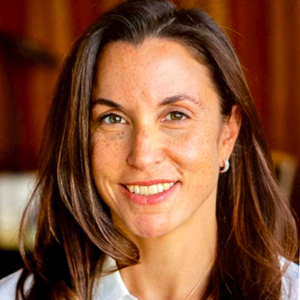

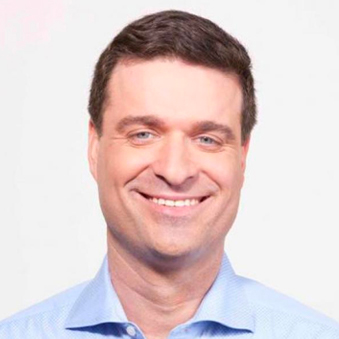
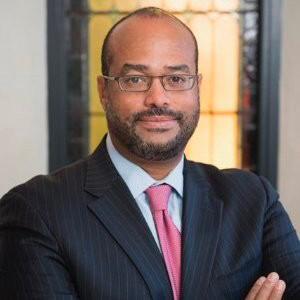

![Launc[H] Launc[H]](https://imagine.nfg.com/wp-content/uploads/2021/07/launchartford.jpg)
